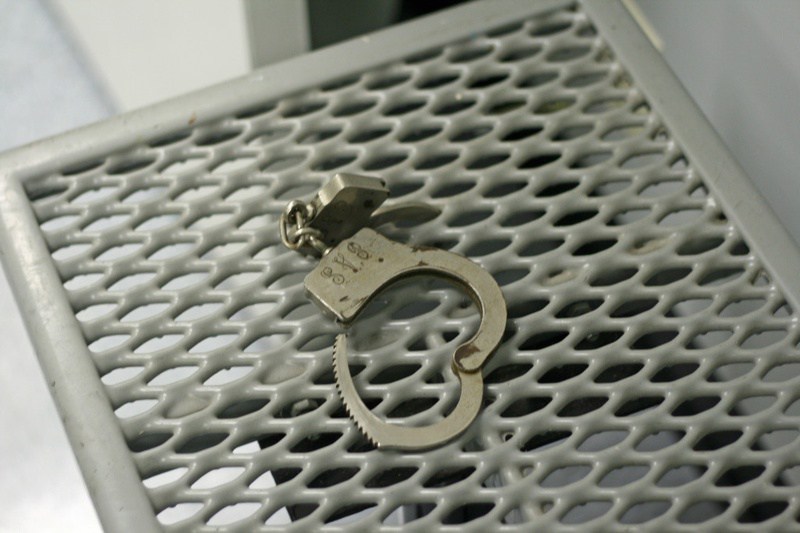The Federal Law "On Operational Investigation Activities" enshrines a list of measures taken by law enforcement agencies to identify and hold liable persons who have committed unlawful acts. This list is considered exhaustive and may be adjusted solely on the basis of federal law. An operational experiment is named as one of the ORMs in the list. It is difficult to overestimate the significance of this event for operational investigative activities. Let us further consider the features of an operational experiment.

Interpretation of the concept
Unfortunately, in the Federal Law "On the operational-search activity" the definition of the event in question is not disclosed. The wording, however, is present in the Recommended Legislative Act on Combating Crime, approved by the Resolution of the Assembly of CIS Member Countries in 1996.
In article 26 of this document, the concept of "operational experiment" is defined as follows. It is understood as the reproduction of the situation, actions, other circumstances of the event, the implementation of the necessary measures for the suppression of crimes, the discovery of entities that prepare them for the perpetrators. The purpose of an operational experiment can also be checking and evaluating information about possible illegal actions, obtaining new information about criminal activity.
This definition is in many respects similar to the interpretation of such a concept as “investigative experiment”. This operational search action is described in article 181 of the CPC.
Nuances
An operational experiment must be distinguished from an investigative one. The latter is carried out by an authorized person (investigator) to verify and clarify the information available in the criminal case. It is carried out by reproducing the situation, actions, other circumstances of the crime. During this event, the possibility of perception of certain facts, the onset of consequences is checked. An investigative experiment allows you to identify the sequence of events, to establish the mechanism of occurrence of traces.
It is carried out on the basis of a court order. As a rule, the victim and the suspect participate in the investigative experiment. If necessary, experts, witnesses, experts are involved in this procedural action.
An operational experiment, in turn, differs from an investigative one in the breadth of its target orientation. Its key feature is conspiracy. When it is conducted, the goals, tasks, and roles of the participants are masked. A narrow circle of employees is dedicated to the design and structure of the operational experiment.
Another difference between events is in the form of recording results. In an investigative experiment, documentation is carried out strictly according to the procedural rules, in an operational experiment, certificates, acts, and reports are issued.
It should be noted one more important difference. The results of an operational experiment are not recognized as evidence. Nevertheless, they are of great importance in obtaining other information that forms the evidence base. Results may indicate objects, circumstances, facts. When they are discovered in a procedural manner, they take the form of evidence.

The specifics of ORM
Authorized persons may conduct an operational experiment publicly or behind the scenes, against specific subjects or to expose citizens whose intentions are unknown to law enforcement agencies.
In view of the foregoing, the operational measure under consideration may consist in the non-procedural implementation of special actions aimed at checking previously obtained information, evaluating versions, reproducing a picture of a crime, and clarifying data that are essential for investigating an act.
ORM content
An operational experiment may include:
- Creation, reproduction, use of conditions in which criminal intentions of suspected entities will manifest themselves.
- Detection of objects of encroachment.
- Establishment and maintenance of covert control.
- Verification of operational information empirically with fixing the results and controlled events.
During the experiment, psychological actions may occur. For example, authorized persons can check the reaction of the suspect to the presence of a person, the displayed object, photographs, etc.
Grounds for an operational experiment
The above actions differ in their nature, time, method of implementation. They can be committed before or after the crime. In accordance with this, the grounds and status of the considered ORM are determined. They are referred to in Article 8 of 144-FZ.
According to the norm, the basis for the experiment is a resolution. It seems that the adoption and approval of this act by the head of the operational investigative department is necessary only when the experimental actions are determined by the active form of behavior of the object under observation. Carrying out ORM should be carried out using means, substances, objects, limited or prohibited for circulation.
Scope of application
Considered ORM is used in a variety of cases. Very often, an event is held to expose bribe takers. In the course of it, for example, a controlled transfer of money from a participant to a racket is made.
An experiment may involve the provision of any item of interest to a criminal. For example, cocaine, marijuana or another prohibited substance is handed over to a drug dealer, a vehicle, etc.
Important point
The legitimate experimentation with prohibited substances implies the existence of legal grounds for their acquisition. If the items are received illegally, the ORM participant will become the subject of the crime himself.
Actions in the conditions of an operational experiment are recognized as legitimate if the initiative belongs to the suspect who wants to complete the transaction. Otherwise, the participants in the event, working on indicators, will contribute to crime, and not fight it.

Regulatory requirements
During the experiment, the provocation of a criminal action is not allowed. It should be understood as the inclination to commit an unlawful act of a subject who has no unlawful intention.
It is forbidden to artificially create evidence of a crime, to fix fictitious circumstances relevant to the investigation.
When analyzing the actions of participants in the experiment, it is necessary to be guided by the norms of 144-FZ, departmental legal acts, as well as the provisions of article 31 of the Criminal Code.
An experiment can only be conducted to identify, suppress, and uncover deliberate, grave, especially grave assaults, i.e., crimes for which the guilty person may be charged with more than 5 years in prison.
Considering that the qualification of an act and its classification in one category or another are possible directly during the investigation and trial, it is enough to carry out experimental actions,so that the infringement can be included in the appropriate category in its severity.
Classification
After analyzing the accumulated practical experience, experts identify 2 main types of experiment. Classification is carried out depending on the purpose of the ORM.
An experiment of the first type is aimed at detecting unknown subjects. Its essence lies in the use of controlled pre-prepared objects - baits. They are located in the alleged places of the crime. For example, if we talk about thefts at train stations, stations, airports, then such items can serve as suitcases, bags left in waiting rooms, cars abandoned in the parking lot. To identify the robberies and robberies, the operatives use equipment that attracts the attention of criminals, and are sent to the places of the likely commission of illegal actions.
In some cases, fairly large-scale actions are carried out. For example, to conduct an experiment, companies are created, apartments and shops are searched for to find entities involved in economic crimes, including those selling stolen goods, prohibited goods, etc.
The second type of experiment is used to record events and directly detain citizens who are reasonably suspected of illegal actions. Typically, such events are carried out in relation to bribe takers, drug dealers, arms sellers, etc.

Preparatory stage
Before conducting the experiment, the head of the operational investigative department must make sure that:
- the nature of the conditions created by employees is reasonably obvious to the object of observation and, accordingly, it is correctly assessed by it;
- there is reason to believe that the planned event will reveal hidden illegal activity, detect a wanted citizen or stolen property;
- the formation for the object committing intentional actions of appropriate conditions is justified due to the unlawfulness of the transaction in which it intends to participate.
The algorithm of actions of operatives
In practice, a general outline of the experiment has developed. Of course, depending on the circumstances, certain items may be adjusted. In general, the algorithm of actions can be represented as follows:
- Obtaining reliable information about the involvement of the subject in a disguised crime.
- Making decisions on the implementation of an operational experiment, making and approving a resolution.
- Planning an event.
- Implementation of measures to record the unlawful activity of a suspect, traces of crimes.
- The implementation of the detention of persons at the time of the commission of the act or the wanted entity upon detection.
From the above list it follows that the very first action of the operatives is to check the information received. After that, an official decision on the implementation of the ORM should be issued and approved. An experiment cannot be considered legal without this document.

Features of the decision
The document should reflect all information regarding the experiment. The decision shall indicate:
- Information about the organizer of the ORM.
- Information obtained previously on the object of observation.
- Signs of a crime to which information points.
- Information about specific subjects, facts, places of the experiment.
The issued and approved decision must be kept by the initiator of the ORM.
Additional Rules
Effective experimentation is ensured by a clear plan. If ORM includes several stages, then a plan can be drawn up for each of them.
According to the provisions of Article 36 of the Federal Law No. 3 of 1998, the use of narcotic and psychotropic drugs for the purposes of the experiment may be carried out without licenses.
Each action of the event participants and objects of observation should be documented.
Result capture
The information obtained during the experiment is reflected in the report. If the purpose of the ORM is to identify a crime or to find the subject involved in it, the result is recorded in a special act. This document must be executed according to the rules provided for the protocol of the investigative experiment. However, the information constituting state secrets is not reflected.

In the introductory part of the document indicate:
- Purpose, time, situation, conditions.
- The arrangement of participants.
- Location of the controlled entity, persons involved in monitoring it.
- Used technical means.
- Comments of the participants.
If a specialist is involved in ORM, information about him is also reflected in the act.
The document must be accompanied by reports of the organizer of the experiment, its other participants, explanations of persons detained during the event, eyewitness accounts, other materials, including video and audio recordings.
Presentation of Results
After carrying out the experiment and fixing the information received, the head of the operational-search department makes a decision. Based on this, the documented results of the ORM are transmitted to the investigating authority, the interrogating officer or the court. In addition, if necessary, a resolution is approved to declassify information classified as state secrets.
The actual transfer of materials is carried out according to accompanying documents.

If necessary, and in the absence of a threat of deciphering the sources of information, methods of obtaining them, the results recorded during the ORM can be declassified by a separate protocol or act. It is composed of an authorized operational officer.
